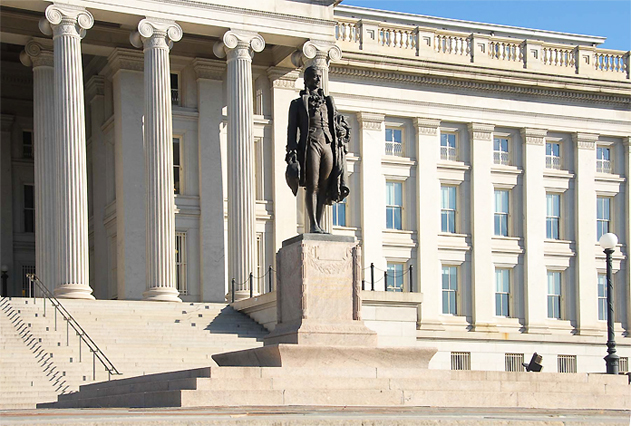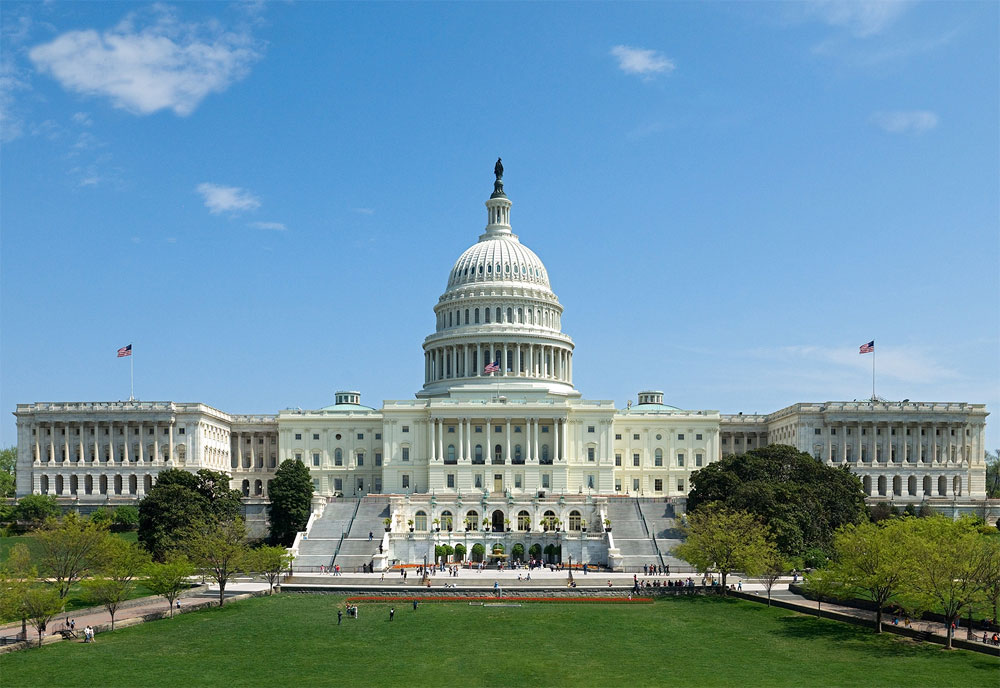TRANSCRIPT: [Treasury Department Senate Testimony:] Russia and Developments in Ukraine

US Department of the Treasury
Testimony of Assistant Secretary Daniel L. Glaser
Senate Foreign Relations Committee
Russia and Developments in Ukraine
Wednesday, July 9, 2014
Chairman Menendez, Ranking Member Corker, and distinguished Members of this Committee, thank you for inviting me to speak to you again about the Administration’s response to Russia’s occupation and purported annexation of Crimea and its continued provocative actions elsewhere in eastern Ukraine.
In my remarks today, I will describe our continuing efforts to impose additional costs on those who seek to destabilize eastern Ukraine and maintain the occupation of Crimea. I will describe the impact that our actions have had on those targeted, as well as on an already faltering Russian economy. I will also discuss the support that we and the international community have provided to Ukraine for its economic recovery.
Imposing Costs for Continued Instability in Ukraine
The President has issued three Executive Orders granting Treasury authority to target those responsible for ongoing unrest in eastern Ukraine and Russia’s purported annexation of Crimea. We have now issued five rounds of designations responding to Russia’s actions and Russia-backed separatists in Ukraine, designating a total of 52 individuals and 19 entities, including four banks. In so doing, we have sought to have the greatest impact on those whose actions have threatened the peace, security, stability, sovereignty or territorial integrity of Ukraine – mainly separatist leaders, members of Putin’s inner circle and the entities that support them, and Russian government officials. Our actions have been complemented by designations announced by others, including the EU, Canada, and Australia.
Most recently on June 20, Treasury designated seven individuals who attempted to establish illegitimate governments in eastern Ukraine or assisted in arming separatist groups. These include: Denis Pushilin, self-appointed leader of the so-called “Donetsk People’s Republic”; Sergei Menyailo, who proclaimed himself “acting governor” of Sevastopol and assisted in the formation of so-called “defense squads” in Sevastopol; and Valery Bolotov, who proclaimed himself “governor” of the Luhansk region and publically “declared war” on the government in Kyiv. Additionally, the United States is working with Ukrainian authorities to identify and disrupt financing to these and other separatists.
As President Obama has stated repeatedly, the United States remains prepared to impose additional sanctions should circumstances warrant. Executive Order 13662 authorizes the targeting of individuals and entities operating in sectors of the Russian economy as determined by the Secretary of the Treasury, in consultation with the Secretary of State. Currently, we are developing a number of options to take action under this authority in the event Russia does not take immediate steps toward de-escalation, including actions involving a broad range of sectors. Of course, such preparation involves close consultation and coordination with our EU, G-7, and other international partners to maximize the impact on the Russian economy. In the past two weeks alone, I have personally travelled to France, Germany, and the U.K. to advance preparations. As Secretary Lew has said, if the moment comes when we need to take additional steps, we will be prepared to do so.
Impact of Measures
Our measures and the threat of future measures have exacerbated pre-existing vulnerabilities of a Russian economy weakened by years of mismanagement. IMF growth projections have been downgraded twice this year, and currently are close to zero. Moody’s and Fitch have revised the outlook on Russia’s sovereign BBB rating from stable to negative, while Standard and Poor’s downgraded the sovereign rating by one notch to BBB-, its lowest investment grade category. This downgrade forced similar ratings cuts on such major Russian corporations as Gazprom, Rosneft, and VTB Bank. The uncertainty created by the combination of Russia’s conduct in Ukraine – and the ongoing threat of sanctions – has created challenges for Russia’s economic outlook, its most prominent companies and its economic policymakers.
President Putin himself has said that Western sanctions imposed on Russia have had real impact on domestic businesses, including limiting access to funding for many Russian companies. As recently as this week, Russian Deputy Finance Minister Sergei Storchak conceded that Western sanctions are having a significant, though indirect, impact on the Russian economy. He went on to say that “the effect of sanctions has intensified because the imposition of sanctions coincided with a fall in the growth rate of the Russian economy.”
Indeed, we have witnessed more than $50 billion in capital flight this year and the IMF and Russian Central Bank project that net outflows will reach $100 billion for the full year. The Russian Central Bank has intervened heavily in order to stabilize the ruble amid persistent outflows. Meanwhile, an increase in risk premium caused a spike in borrowing costs shutting many Russian companies out of external debt markets. Russia’s Lukoil has indicated that it will cut spending in order to reduce dependency on international debt markets. Furthermore, the bottom lines of key Russian financial institutions demonstrate the effects of a weakening ruble and deteriorating investment climate. In late May, Russia’s two largest banks by assets, Sberbank and VTB, reported 18 and 98 percent drops in quarterly profits, respectively. Finally, it is important to note that despite the more recent recovery in asset prices, Russian asset prices continue to underperform relative to their emerging market peers.
While Russian politicians project confidence in the face of sanctions, their government’s actions show otherwise. The Russian Central Bank has raised key interest rates twice this year and spent approximately $30 billion in foreign exchange reserves since March to stabilize the ruble, amid heavy capital outflows in the first quarter. Despite these interventions, the Russian ruble has depreciated by 5 percent since the beginning of the year. Likewise credit institutions’ liabilities to the Central Bank of Russia have increased by over $30 billion (25 percent) since February. President Putin admitted last month that the Government of Russia may need to intervene with budget funds to support Russia’s banks.
As a result of sanctions, the Russian government has openly discussed diverting government funds to support Russian industry. Recently, President Putin stated that Russia needs to look into recapitalizing Gazprom by the amount it would cost to build infrastructure in the Far East. Likewise, the Russian Ministry of Trade and Industry has proposed an import substitution program increasing annual domestic volume of production by more than $890 million starting from 2015 in order to offset import losses. Taken as a whole, these measures indicate that the Russian government is focused on short-term crisis fighting, which in addition to increasing the costs of Russia’s decision to intervene in Ukraine, is costing Russia the investment needed to reverse Russia’s long-term downward economic trends. To grow, Russia needs foreign direct investment and to integrate with the global economy. As a consequence, the isolation Russia now faces as a result of its actions in Ukraine will have a significant impact on Russia’s growth prospects over the medium term.
Support to Ukraine
In addition to our measures to isolate the Russian economy, the United States government is working with the international community to support the Ukrainian government in returning the country’s economy to a solid footing. The approval on April 30 of a two-year, $17 billion IMF reform program has unlocked additional bilateral and multilateral financial support and will set Ukraine on a path to sustainable growth. The IMF is at the center of a broader, $27 billion international support package, and is best placed to support Ukraine’s implementation of robust and market-oriented reforms. International assistance totaling nearly $6 billion has been disbursed to date. The government successfully issued $1 billion in five-year, U.S.-backed debt at a reasonable borrowing cost in mid-May. The first review of Ukraine’s IMF program began at the end of June, and provided Ukraine fulfills its reform commitments, approximately $2 billion is expected to be provided by the IMF, World Bank, and other donors by the end of July, with additional resources scheduled for disbursement by the end of the year.
Ukraine’s new government has already completed key policy reforms that demonstrate its willingness to make the tough decisions necessary to restore economic stability to Ukraine, and this momentum must be maintained. Retail natural gas prices have been increased, a fiscally responsible budget has been passed, the procurement law has been amended to strengthen governance, and the central bank has allowed market forces to determine the value of the currency. Still, significant challenges remain, including continued implementation of difficult reforms by the Ukrainian government and ensuring Ukraine has a stable supply of gas. At the same time, conflict in eastern Ukraine is taking a significant toll on Ukraine’s already vulnerable economy. Economic activity in parts of eastern Ukraine has ground to a halt and the security situation is undermining confidence and international investment. We are working with the IMF, World Bank, and others to ensure Ukraine has the support it needs over the coming months.
To complement this international financial assistance, expert advisors from Treasury’s Office of Technical Assistance have been deployed to Kyiv to help the Ukrainian authorities stabilize the financial sector and implement reforms. Treasury advisors are working closely with the Finance Ministry, National Bank of Ukraine, and Deposit Guarantee Fund to develop strategies to manage public sector debt, resolve failed banks, improve banking supervision, and spur financial intermediation.
Conclusion
By combining our efforts to impose financial costs on those threatening peace and security in Ukraine with measures to encourage Ukrainian economic recovery, the United States Government is working to contribute to the development of a strong, unified, and prosperous Ukraine. Furthermore, we are prepared to take additional strong measures to impose severe costs on Russia in defense of Ukraine’s sovereignty and territorial integrity.

